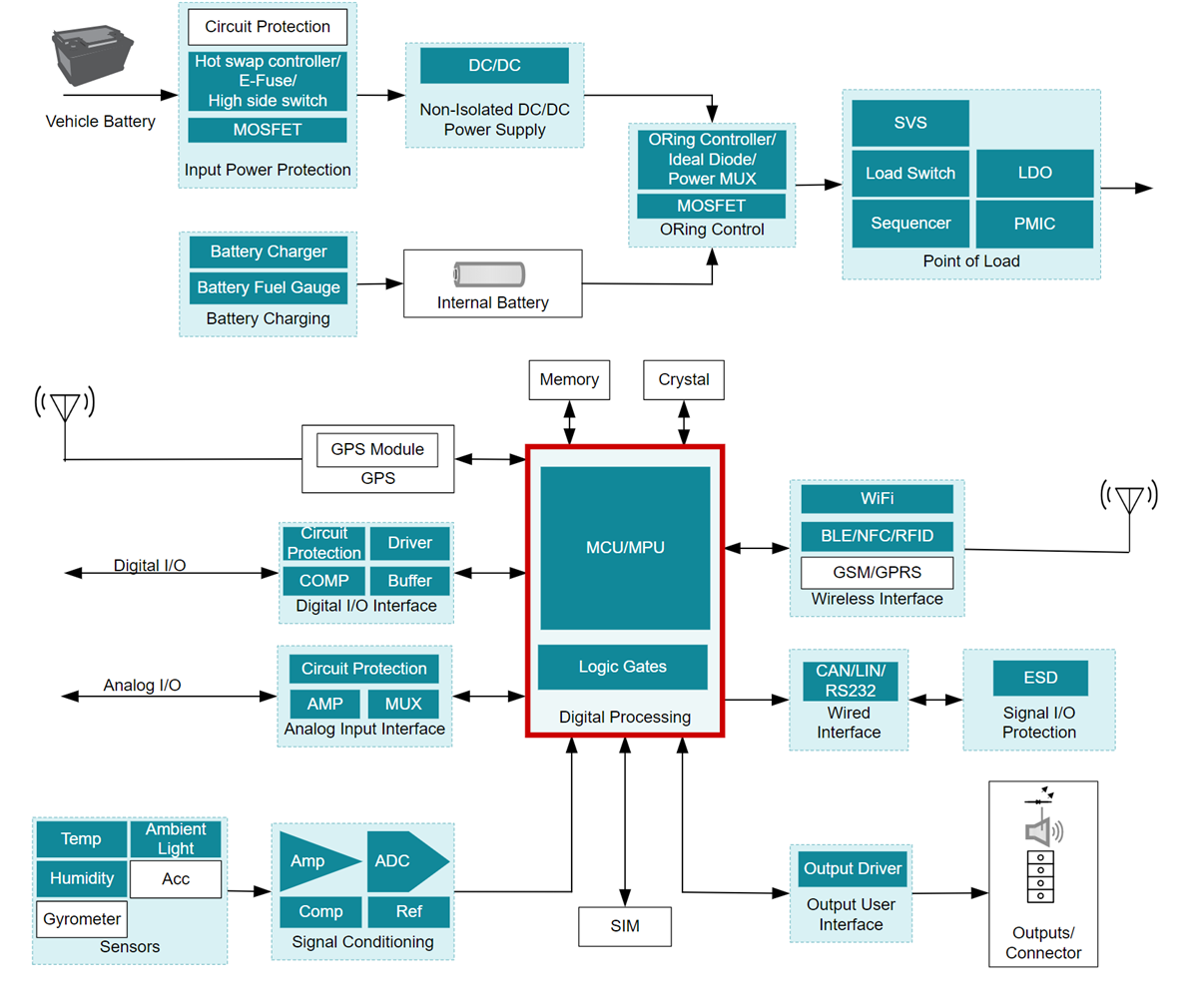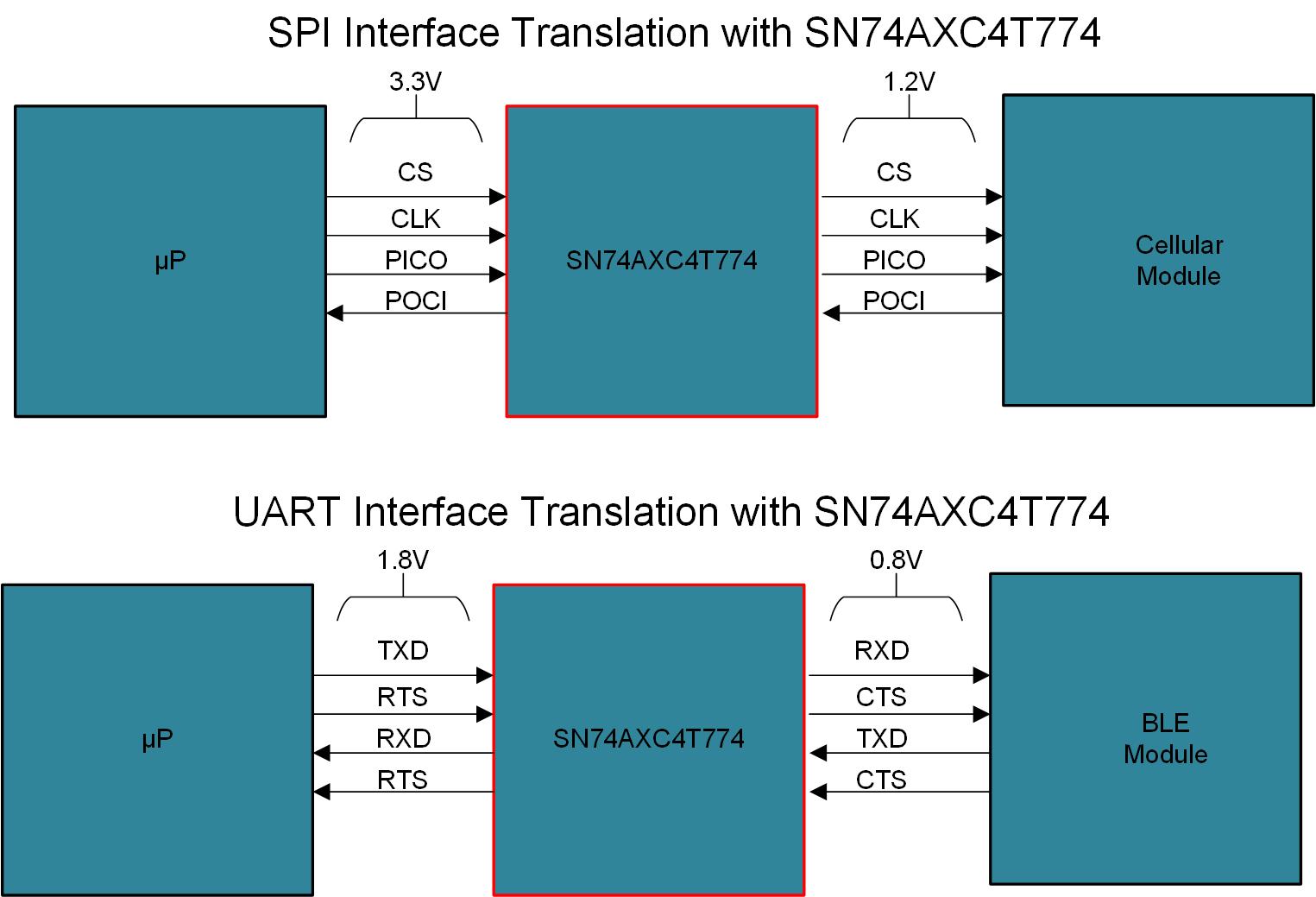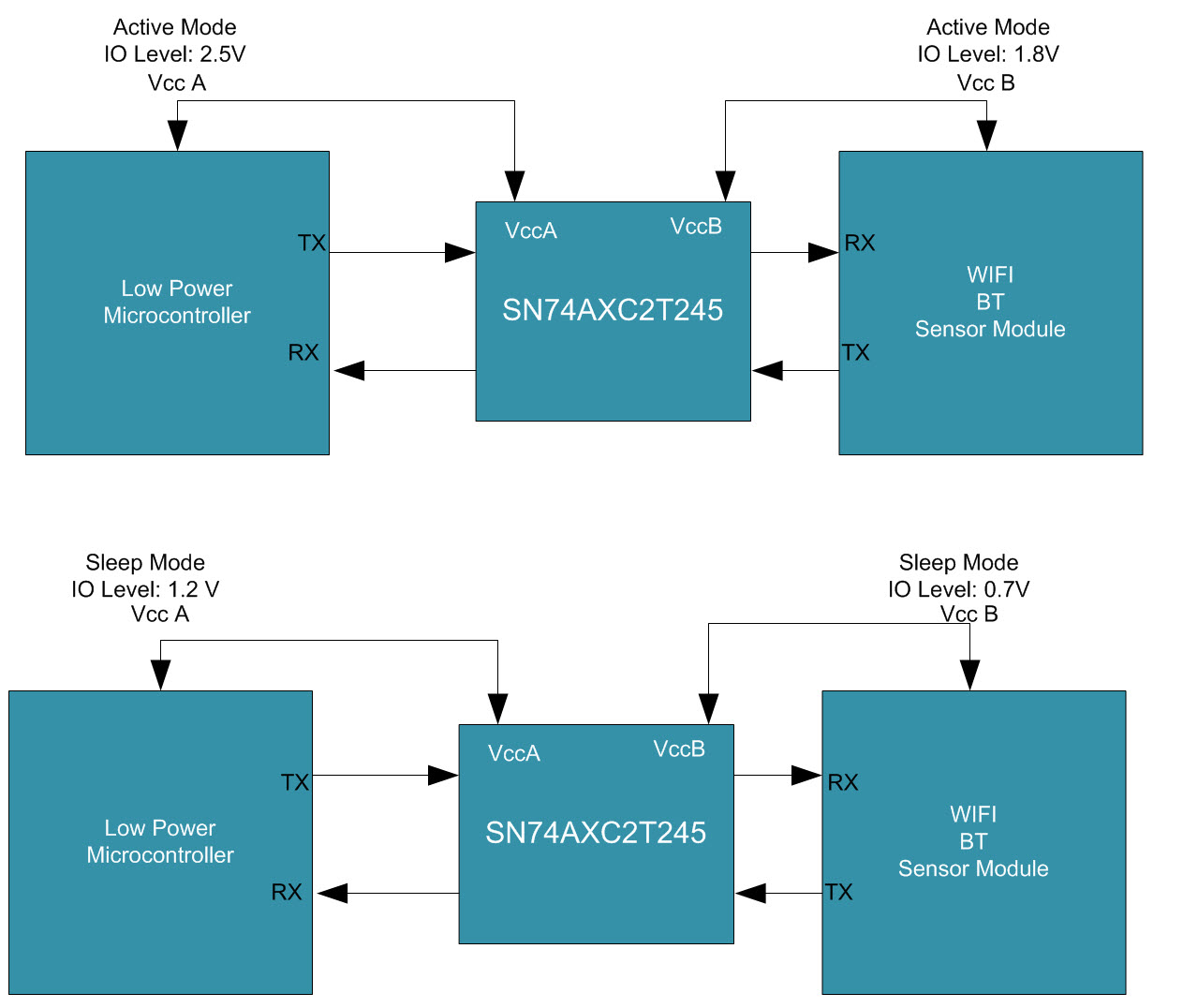SCEA104 October 2021 SN74AXC2T245 , SN74AXC2T45 , SN74AXC4T774
1
Global trade and commerce is accelerating and that has brought to light the importance of supply chains and the logistics of managing supply chains through all sorts of market conditions. For example, developing and managing a resilient “cold” supply chain to move temperature sensitive products is more important today than ever before. During a crisis, the resiliency of supply chains can be tested. The resiliency of supply chains is being strengthened by new technologies such as IoT and wireless tracking modules. Wireless tracking technologies, such as battery powered wireless asset tracking modules (see fig 1), have evolved rapidly over the past few years becoming more pervasive as their cost and usability barriers decrease.
 Figure 1-1 Figure 1 Wireless Asset Tracker System Reference Block Diagram
Figure 1-1 Figure 1 Wireless Asset Tracker System Reference Block DiagramWireless trackers are a key component of applications such as fleet tracking and logistics management for many types of businesses which allow them to not only track the movement of goods but also monitor and route goods in the most efficient manner possible. Today, wireless tracking modules not only have to be low cost they also have to operate for long periods of time without the need for battery replacement or recharge. System designers developing new wireless trackers are faced with the challenges of having to develop cost competitive tracking modules that are also very power efficient. Designers have to make design component selection decisions that will result in the most cost competitive solution while still ensuring the selected components can operate in the most power efficient manner possible. A critical factor that often impacts overall system cost is the selection of the tracker’s microcontroller or processor. System designers need to select a microcontroller that has just enough resources to implement the design to ensure a cost competitive solution. Often a key consideration in selecting a microcontroller is the number of Input/Output (IO) pins that are available to the designer. To help overcome one of the challenges of selecting a system microcontroller, designers can consider using simple shift register building block circuits during the system partitioning phase of their design as a way to optimize the cost of their microcontroller. Greater IO count microcontrollers may cost more than the cost of adding one or two simple shift registers to a lower cost and lower power microcontroller with fewer GPIO. Shift registers provide a simple and cost effective way to add a few or many Inputs/Outputs (I/O) to a design enabling the usage of smaller, lower cost and more power efficient controllers without sacrificing needed Input/Output (IO) pins. A great resource for finding suitable shift register solutions is TI’s logic landing page at ti.com/logic. Shift registers are available in both serial in parallel out, such as TI’s latest SN74HCS595 & SN74HCS164, and parallel in serial out, such as the new SN74HCS165. Once a designer has selected the system components for a tracking module, the next challenge is ensuring that the overall solution is power efficient. Battery powered applications such as wireless tracking modules often have elements such as sensors, low voltage microcontrollers, GPS, and wireless communications devices at their core and all of these components need to operate in an extremely power efficient manner. The selection of these core components often requires design engineers to select devices that do not always easily interoperate with one another. One key difference between selected core devices, that poses design challenges, is differing Input/Output (I/O) voltage levels that are common among low voltage devices and their different operating modes. For example, low power sensor I/O may operate at 1.8V when active but the I/O can drop to below 1V during deep sleep mode to conserve battery. Similarly, processors and GPS module I/O may operate at 2.5V during active operation and then the I/O is likely to drop to a much lower voltage in low power modes. New standards are taking advantage of deep sleep modes to extend battery life. For example, the new WiFi-6 standard has a new feature called Target Wait Time (TWT) which allows the access points and client nodes, such as trackers, to negotiate preset wake and transmit schedules. Target Wait Time based scheduling enables battery powered devices to enter deep-sleep for extended periods, significantly increasing battery life. How can a design engineer bring together the core components of a wireless tracking module design and still take advantage of their low power capabilities? The simple answer is to use low power level shifter devices that can support shifting I/O levels down to < 1V. For example, TI’s AXC level translator devices (.65V to 3.6V) enable design engineers to implement low power level shifting between core components for interfaces such as SPI, UART, GPIO and virtually any other push-pull interface as well as the low voltage I/O levels associated with ultra-low power modes these devices will require from these interfaces. See Figure 2 for SPI and UART examples. See figure 3 for deep sleep mode use case example. As wireless tracking modules become a key component of securing and managing supply chains, asset tracking module designers will need to leverage low power IC building block technologies such as new low power level shifters and new robust and power efficient multi-gate logic devices. These new building block technologies can help wireless tracking module system designers bring their designs together in the most efficient manner possible.
 Figure 1-2 Figure 2 Use Case for Low Power Operation
Figure 1-2 Figure 2 Use Case for Low Power Operation Figure 1-3 Figure 3 Use Case for Deep Sleep Operation
Figure 1-3 Figure 3 Use Case for Deep Sleep Operation